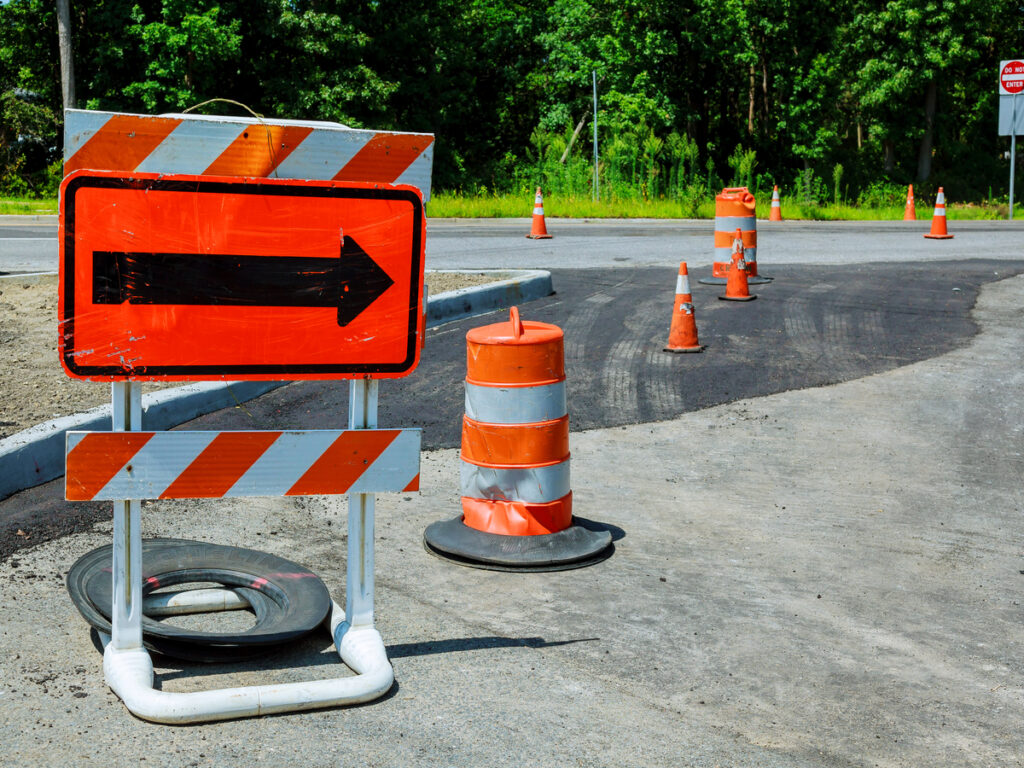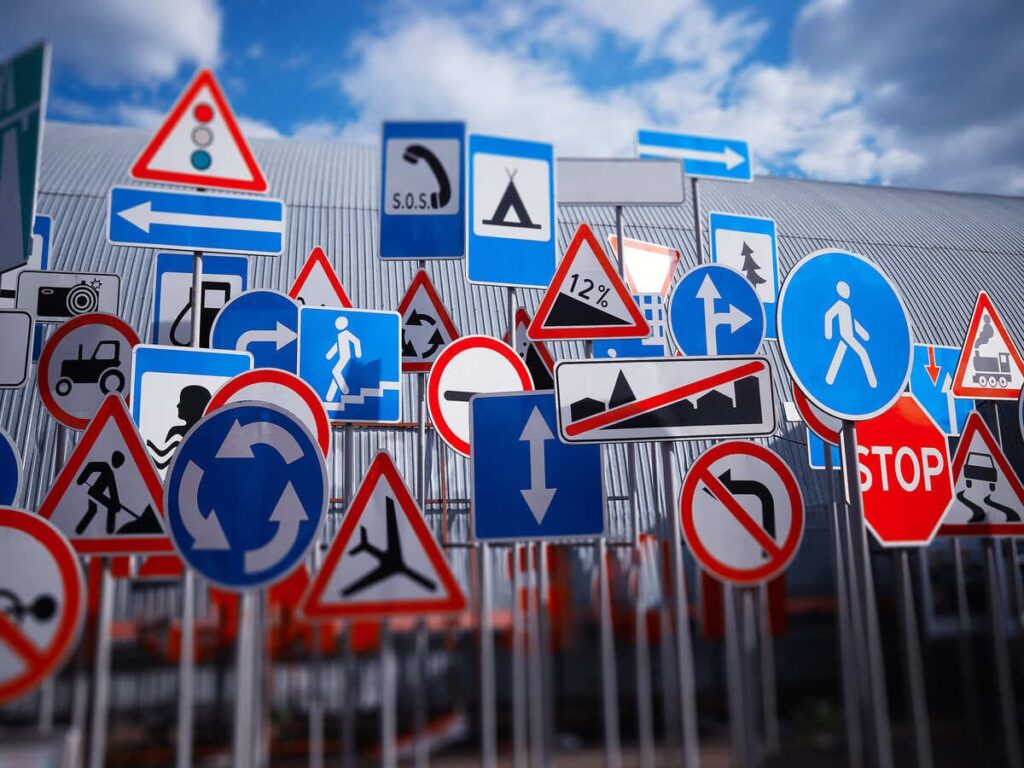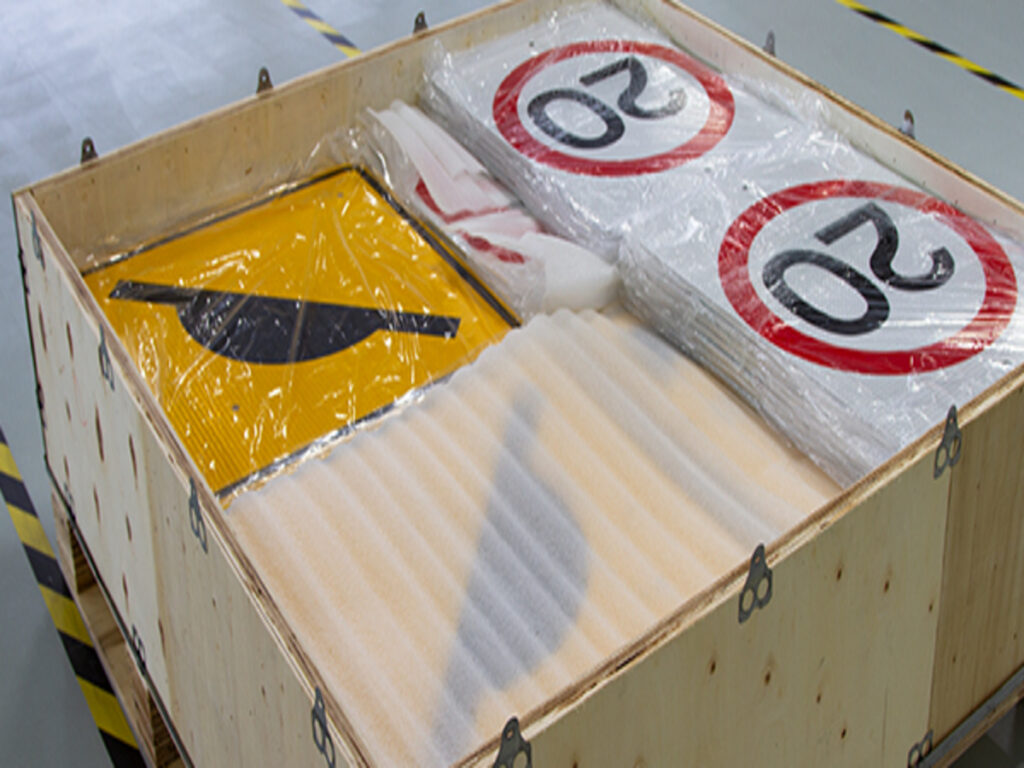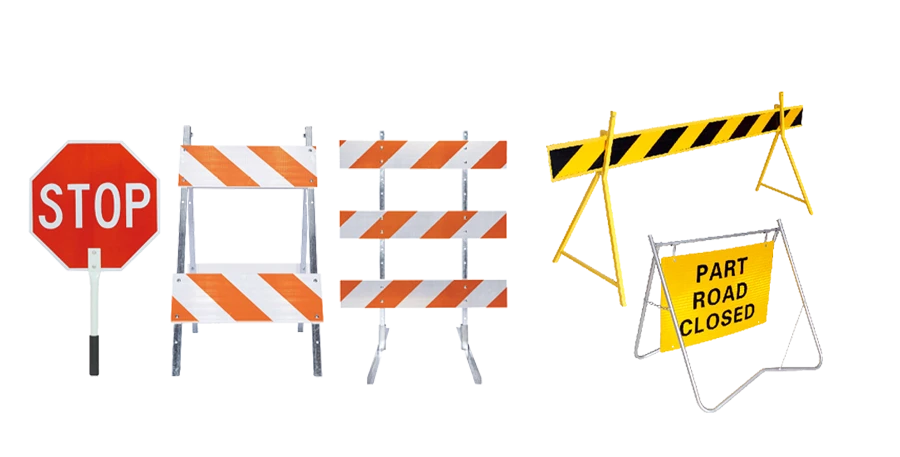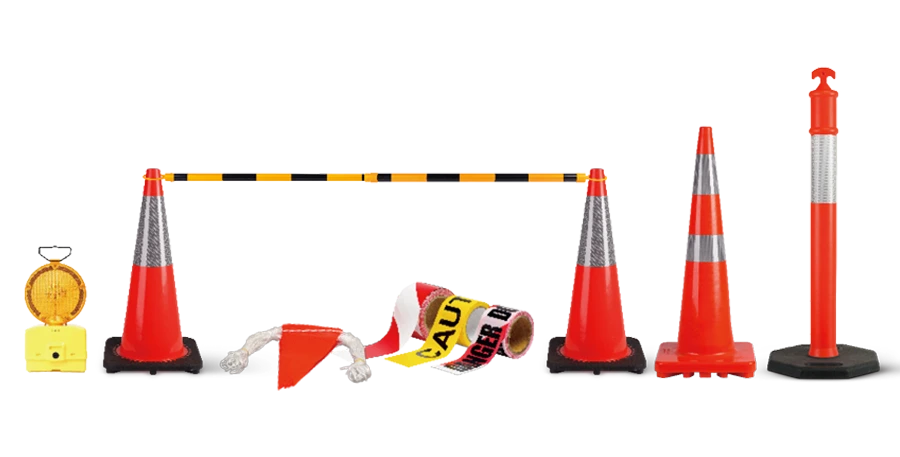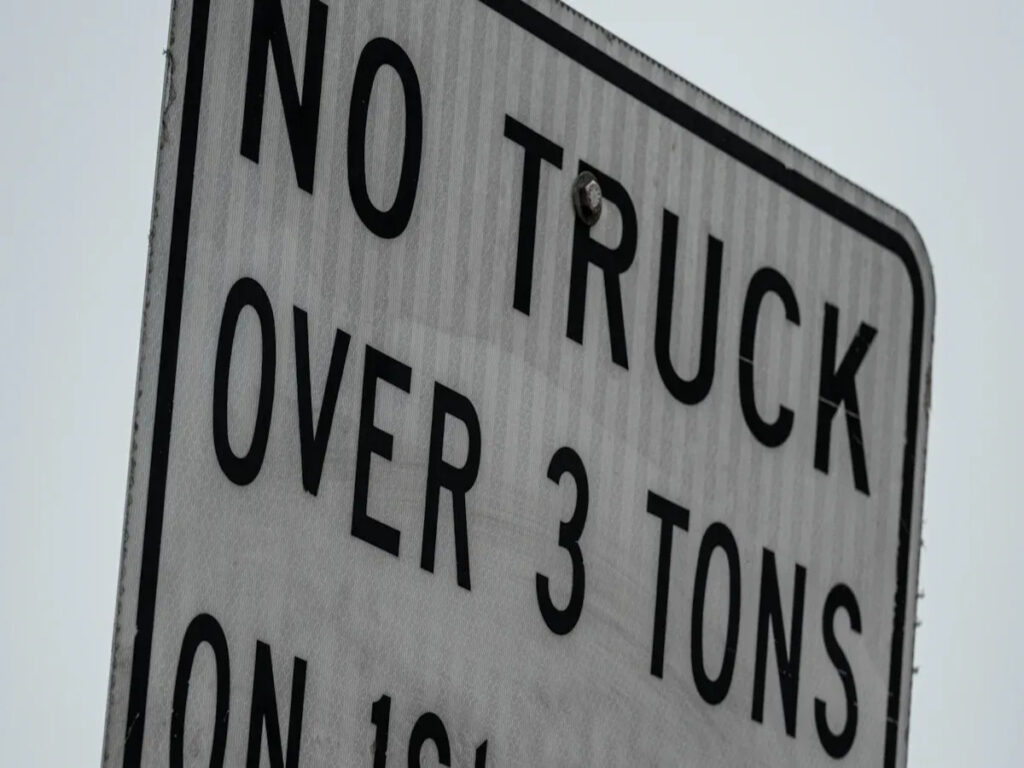
Weight limit signs are important for keeping roads and bridges safe. They help people who manage traffic and companies that move goods. These signs stop damage and save money on repairs. Trucks that are too heavy hurt roads every year.
- Arizona says overweight trucks cause $12 million to $53 million in damage each year.
- Texas found that heavy vehicles pose a significant risk to driver safety, damage roads and bridges, increase the likelihood of rollovers, accelerate wear and tear, and lead to higher vehicle depreciation rates.
Knowing about weight limit signs helps lower these risks. It also helps people follow the law.
At OPTRAFFIC, we provide a wide selection of road signs for sale, including weight limit signs, to help protect infrastructure and reduce costly repairs. Explore our durable, high-quality signage solutions to keep your roads safe.
Key Takeaways
- Weight limit signs keep roads and bridges safe from heavy trucks. Following these signs stops expensive damage.
- Knowing about different weight limit signs is important for safe driving. These include weight limit and axle weight limit signs.
- Companies need to check state and local weight limits often. This helps them avoid fines and deliver on time.
- Technology, like onboard weighing systems, helps drivers watch their truck weights. This stops them from carrying too much.
- Teaching workers about weight limit rules keeps everyone safe. It also helps follow the rules and makes roads better.
Understanding Weight Limit Signs: Importance and Types
What Are Weight Limit Signs?
Weight limit signs show the highest weight allowed for vehicles. These signs are placed on certain roads or bridges. The Manual on Uniform Traffic Control Devices (MUTCD) lists different types of these signs. Look at the table below to see the most common MUTCD weight limit signs and what they mean:
| Sign Type | Description |
|---|---|
| Weight Limit (R12-1) | Tells drivers the total weight their vehicle can be, including the load. |
| Axle Weight Limit (R12-2) | Sets rules for how much weight each axle can carry. |
| No Trucks Over (R12-3) | Stops trucks over a certain empty weight from using some residential roads. |
| Combined Weight Limit (R12-4) | Puts more than one rule on one sign to make things clear. |
| Weight Limit Symbol Sign (R12-5) | Shows weight limits with truck pictures to help police check trucks. |
Transportation authorities have to follow strict rules for these signs. Agencies must put up weight limit signs using new bridge posting rules. Signs should be placed before the bridge or structure. This gives drivers enough time to slow down or change routes. The R12 Series of weight limit signs in the MUTCD sets the main rules for these signs.
Why Weight Limit Signs Matter for Safety and Compliance
Weight limit signs help keep roads and bridges safe by preventing vehicles from exceeding the maximum weight capacity. The weight limit sign meaning is to ensure that vehicles do not become too heavy for the road or bridge they are using. Overweight vehicles can damage roads and bridges, and if drivers ignore these limits, it can lead to costly repairs and pose safety risks for everyone.
Companies that move goods must obey weight limit signs. This helps protect roads and bridges from damage. Following these road safety signs also helps police and other officials enforce the law. The Department of Transportation (DOT) uses these signs to keep drivers and the public safe. When companies follow weight limits, they avoid fines and help roads last longer.
Note: Following weight limits helps companies stay out of trouble. It also saves money and keeps deliveries on time.
Regulations and Legal Limits for Weight Limit Signs
Federal, State, and Local Regulations on Weight Limits
Federal rules set the main weight limits for roads in the United States. The government decides how heavy trucks can be on Interstate highways. For example, a single axle can carry up to 20,000 pounds. Tandem axles can hold up to 34,000 pounds. Trucks with five axles can weigh up to 80,000 pounds in states like California, Texas, and New York. Some states let trucks carry more weight if they have extra axles or special permits.
| State | Maximum Gross Weight (5 Axles) | Special Conditions |
|---|---|---|
| California | 80,000 pounds (36,287 kg) | 86,000 pounds (39,009 kg) for 6+ axles |
| Texas | 80,000 pounds (36,287 kg) | Up to 90,000 pounds (40,823 kg) with permit |
| New York | 80,000 pounds (36,287 kg) | Special permits for exceeding this limit |
Local governments set weight limits for city and rural roads, sometimes allowing older trucks to use roads under previous rules. States must enforce these limits to receive federal highway funds.
Federal rules set maximum truck weights on Interstate highways: 20,000 pounds for single axles and 34,000 pounds for tandem axles. States can set different limits on other roads.
Federal law allows trucks up to 102 inches wide on the National Network for Large Trucks. Some states allow older trucks to continue under old rules.
Both state and federal agencies monitor truck weights and collaborate to ensure compliance. Local governments install weight limit signs to protect bridges and older roads, guiding drivers on detours and restrictions.
Adhering to MUTCD Standards for Weight Limit Signs
The Manual on Uniform Traffic Control Devices (MUTCD) gives clear rules for weight limit signs. These rules help states and cities use the same signs and keep roads safe. The MUTCD gets updated every four years. This makes sure weight limits match new needs and technology.
| Standard/Guidance | Description |
|---|---|
| Option 01 | The Weight Limit sign shows how heavy a vehicle can be, like WEIGHT LIMIT XX TONS. |
| Option 02 | For axle weight, signs may say AXLE WEIGHT LIMIT XX TONS or AXLE WEIGHT LIMIT XX LBS. |
| Option 03 | To keep big trucks off some streets, signs may say NO TRUCKS OVER XX TONS EMPTY WT. |
| Option 04 | One sign can show more than one rule, like WEIGHT LIMIT XX TONS PER AXLE, XX TONS GROSS. |
| Option 05 | The Weight Limit symbol sign can show special load limits. |
| Standard 06 | The Weight Limit sign must be put up before the road or bridge where the rule starts. |
| Guidance 07 | The sign should be at places where trucks can turn or take another route. |
| Update Frequency | Description |
|---|---|
| Every 4 years | The MUTCD rules, including weight limit signs, get updated every four years. |
| Recent Changes | A new MUTCD edition must come out within 18 months after BIL starts, and then every four years. |
States and cities must follow MUTCD rules when putting up weight limit signs. Signs should be placed before bridges or roads with limits. This gives drivers time to change their route. Regular updates help agencies use the best rules for weight limits.
Types of Weight Limit Signs
Weight Limit Signs for Trucks
Truck weight limits help keep roads and bridges safe. These signs tell drivers the most their trucks can weigh. Agencies use different signs to guide truck drivers:
- Bridge Weight Limit __ Tons: Drivers must find another way if their truck is too heavy.
- No Trucks Over __ lbs GVW: Trucks heavier than this cannot use the road.
- Load restriction signs: These signs protect roads and keep people safe.
Truck weight limits must follow Federal MUTCD rules. Agencies use shiny signs so drivers can see them at night and during the day. Some signs are made for certain roads or bridges. If drivers ignore these limits, they can get fined or have to take a different route.
Truck weight limits affect how companies plan their trips. They must follow these signs to avoid trouble and extra costs. Good planning helps stop crashes and keeps everyone safe.
Weight Limit Signs for Bridges
Bridge weight limit signs show the most weight a bridge can hold. Engineers set these limits by looking at how the bridge was built and its condition. Here is a table with common bridge weight limits in the United States:
| Type of Weight Limit | Weight (pounds) | Weight (kg) |
|---|---|---|
| Gross Weight | 80,000 | 36,000 |
| Tandem Axle | 34,000 | 15,000 |
| Single Axle | 20,000 | 9,100 |
Going over the bridge weight limit can break the bridge. Studies show fixing bridges can cost from one cent to over thirty dollars per foot, depending on the truck and bridge.
Bridge weight limit signs help stop expensive repairs and keep everyone safe.
Special Weight Limit Signs for Containers
Container weight limits are important for moving goods safely at ports. OSHA says containers must show their weight. Each container needs to show empty weight, max cargo weight, and total weight. These labels help workers and drivers know if it is safe to move the container.
- Container weight limits must be easy to see on every container.
- Workers need to check if containers are full or empty before lifting.
- If there are scales, containers must be weighed before moving.
- Container weight limits protect machines and stop accidents when loading and unloading.
- Ports use these limits to control traffic and keep cranes and trucks from getting too heavy.
- Companies use container weight limits to plan safe trips.
- Container weight limits help stop delays and fines for heavy loads.
- Correct container weight limits help follow the law.
- Container weight limits lower the chance of damage to roads, bridges, and ports.
- Container weight limits make things safer for workers and drivers.
- Container weight limits help cargo move easily through ports.
- Container weight limits help companies avoid mistakes and keep a good safety record.
Container weight limits are very important for safe and legal shipping in the logistics business.
How Weight Limit Signs Prevent Damage to Infrastructure
Protecting Infrastructure with Proper Weight Limit Signs
Weight limit signs help keep roads and bridges safe. Transportation agencies use these signs to stop heavy trucks from crossing weak bridges. Studies show that weight limits help bridges stay strong. Experts compare bridge damage before and after using weight limit signs. They look at bridge ratings to see the difference. Good signs let police give tickets to drivers who break the rules. Bridge owners do not get blamed if a bridge breaks because of a heavy truck.
- Weight limit signs protect bridges from trucks that are too heavy.
- Police can give tickets to drivers who ignore weight limits.
- Bridge owners do not get in trouble if signs are posted.
The Risks of Overloading and Damage
Not following weight limits causes big problems for roads and bridges. Heavy trucks make roads break faster and can make driving dangerous. Bridges get extra stress and might break. Heavy trucks also hurt rail tracks by making them wear out. Damage includes cracks, holes, and weak spots in bridges. These problems cost more money to fix and make bridges more likely to fall.
Trucks that are too heavy hurt roads and bridges. People pay more taxes to fix damage when drivers do not follow weight limits.
Ignoring weight limits is also unsafe for everyone. Accidents can happen if trucks cannot stop or turn easily. Broken bridges put all drivers in danger. In construction, heavy dumpsters can hurt workers and others nearby. Following weight limits keeps roads, bridges, and work sites safe.
The Cost Savings of Adhering to Weight Limit Signs
Listening to weight limit signs saves money for towns and companies. When drivers follow the rules, roads and bridges last longer. Fewer repairs mean less money spent by people and road workers. Companies do not get fined or slowed down by heavy trucks. Maintenance money goes further when weight limits are followed.
- Roads and bridges cost less to fix.
- There is less chance of needing expensive repairs after something breaks.
- Companies have fewer delays and fines from heavy trucks.
Following weight limits keeps roads and bridges safe, saves money, and helps everyone.
Ensuring Compliance with Weight Limit Signs
Monitoring and Enforcing Compliance
Authorities use different ways to check if drivers follow weight limit signs. Weigh-in-motion systems help sort trucks at weigh stations. These systems use signs to tell drivers where to go. Trucks that might be too heavy are sent to special scales for more checks.
Some important parts of these systems are:
- Scales or sensors that measure how heavy vehicles are.
- Cabinets by the road that turn these measurements into weight numbers.
- Communication tools that send weight numbers to officers.
Drivers who break weight limit rules get punished. The punishment depends on how much over the limit the truck is. For example:
- If a truck is over by 2,000 pounds or less, the fine is 1 cent for each pound.
- If it is over by 2,001 to 4,000 pounds, the fine is 3 cents for each pound.
- If it is over by 4,001 to 8,000 pounds, the fine is 12 cents for each pound.
- If it is over by 8,001 to 12,000 pounds, the fine is 22 cents for each pound.
- If it is over by more than 12,001 pounds, the fine is 35 cents for each pound.
- Every time someone breaks the rule, there is a $20 fee.
- If the truck is 25% to 50% over the legal weight, the fine is doubled. If it is over by more than 50%, the fine is tripled.
- First-time drivers who are less than 1,500 pounds over may not have to pay.
Checking trucks often and having strong rules keeps roads and bridges safe for everyone.
The Role of Logistics and Transportation Companies
Logistics and transportation companies help make sure trucks follow weight rules. They need to use good methods to stop problems and keep shipments safe. These methods are:
- Give the correct weight for every shipment.
- Make sure the weight is spread out in containers.
- Pick the right container size and type for each load.
- Plan trips that follow weight rules.
- Take care of vehicles and containers often.
- Teach workers about weight limit rules.
- Use digital tools to get updates about weight rules.
When companies do these things, they help keep roads and bridges safe. They also avoid big fines and make their safety records better. Deliveries arrive on time when rules are followed.
Leveraging Technology to Ensure Compliance with Weight Limit Signs
Technology helps companies and drivers follow weight limit rules more easily. Onboard weighing systems show drivers how much their trucks weigh right away. This helps drivers make fast choices and avoid fines for being too heavy.
Some good things about onboard weighing systems are:
- Drivers and managers see load weights right away.
- Cargo weight can be checked before leaving.
- Trucks do not have problems with handling or stopping because of too much weight.
- Vehicles need fewer repairs because they are not overloaded.
- Companies save money and make more profit by managing loads well.
Using technology helps companies follow weight rules and work safely and quickly.
Weight limit signs are essential for maintaining road and bridge safety, helping traffic managers and companies avoid costly repairs. By following these rules, crashes and delays are reduced.
Regularly check weight limit rules, educate workers to observe and follow signs, and use accurate tools to determine the correct weight. Acting early ensures roads remain safe and resilient for everyone.
At OPTRAFFIC, we provide high-quality weight limit signs and other road safety products to help you comply with regulations and protect infrastructure.
Visit us today to explore our reliable road safety solutions.
FAQ
What is the meaning of a weight limit sign?
A weight limit sign indicates the maximum weight a vehicle is allowed to carry on a particular road or bridge. These signs help prevent damage to infrastructure and ensure the safety of all road users.
What are the 4 basic weight limits?
The four basic weight limits for trucks typically include:
- Single axle – 20,000 pounds
- Tandem axle – 34,000 pounds
- Gross vehicle weight – 80,000 pounds (for five-axle trucks)
- Bridge formula – Varies depending on the length of axles and total weight.
Always check local weight limit signs to comply with regulations specific to your route.
What are the basic weight limits for trucks?
Most states set the legal weight limit for trucks with five axles at up to 80,000 pounds. However, some states allow heavier trucks with special permits or additional axles. Always check weight limit signs for trucks before planning your route to ensure compliance.
What is the structural weight limit sign?
A structural weight limit sign is posted to indicate the maximum weight that can safely pass over a bridge or road structure without causing damage. It is particularly important for older or weaker infrastructure.
What is the sign for the 7.5 weight limit?
A 7.5 weight limit sign typically means that the maximum allowable weight is 15,000 pounds. Vehicles exceeding this limit must find an alternative route to avoid damage to the road or bridge.
How do authorities enforce weight limit signs?
Authorities use weigh stations, portable scales, and weigh-in-motion systems to check truck weights. Drivers who exceed the posted limits may face fines to ensure compliance with weight limit sign MUTCD standards.
Where can I find weight limit sign information?
For accurate weight limit sign information, refer to local and state regulations. Weight limit signs for trucks and bridges are installed to prevent damage to infrastructure, improve safety, and maintain traffic flow. Always follow posted limits to avoid fines and protect the roads.
By understanding and adhering to weight limit signs and regulations, you contribute to safer roads and more efficient traffic management.

